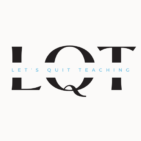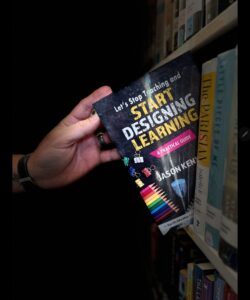We recently celebrated the 4th of July, our nation’s Independence Day. Behind all the picnics and parties, the fireworks and frankfurters, lies the historial the journey of the early American colonies. The founders realized that compliant and passive obedience to the crown was not working. The country needed the ability to make decisions on its own. The need for self-governance and autonomy resonates deeply, not just as a historical milestone, but as a metaphor for modern education. Just as the colonies sought the freedom to self-govern, our learners too can benefit greatly from the freedom to self-regulate their learning. In today’s classrooms, fostering self-regulated learners can transform the educational experience, leading to greater autonomy, responsibility, and success for learners and teachers alike.
Promoting a Growth Mindset
Developing a growth mindset in learners is essential for fostering self-regulated learning. I’ll say this about growth mindset: We have tended to make it a simply-stated mantra without any meaningful methods behind it. It is far more than just learners believing. We have to provide pathways of practice to teach learners that their abilities can improve with effort and persistence, they are more likely to take on challenges, learn from mistakes, and persist through difficulties. Teachers can promote a growth mindset by praising effort rather than innate ability, sharing stories of personal and famous failures followed by eventual success, and encouraging learners to view challenges as opportunities for growth. Hattie’s research shows that the impact of a growth mindset is significant, with an effect size of 0.44. It is more than a mindset shift that empowers learners to see effort as the path to mastery, leading to higher levels of motivation and a willingness to embrace new challenges. We have to make it a practical practice that provides evidence for learners to really use a growth mindset rather than just having one. That’s the first step to independence.
Encouraging Metacognitive Strategies
There’s a reason why our freshman year at college is so challenging. We have to learn how to learn. There’s no support system like our public schools. That’s why we must start the process while we still have them with us in the classroom. Metacognition is a critical skill for self-regulated learning. Teaching learners metacognitive strategies involves instructing them on how to plan, monitor, and evaluate their learning processes. Teachers can model these strategies by thinking aloud during problem-solving activities, discussing different approaches to tasks, and encouraging learners to reflect on what strategies worked and what didn’t. According to Hattie, metacognitive strategies have an effect size of 0.69, underscoring their importance in enhancing learning outcomes. Encouraging learners to be aware of their cognitive processes helps them develop better strategies for learning, leading to improved problem-solving skills and greater academic resilience.
Implementing Goal Setting and Planning
Goal setting is fundamental in helping learners become self-regulated. By teaching learners to set specific, achievable goals, we empower them to take ownership of their learning. This process involves not just setting goals, but also creating actionable plans to achieve them. For instance, teachers can guide learners in breaking down larger assignments into manageable tasks, setting deadlines for each task, and reflecting on their progress regularly. This approach aligns with Hattie’s Visible Learning research, which highlights that goal setting has an effect size of 0.68, indicating a significant impact on learner achievement. Providing learners with clear objectives helps them focus and prioritize their efforts, fostering a sense of control and direction in their learning journey.
Designing Tools for Ownership of Learning
Providing learners with tools to take ownership over the monitoring, assessment, and revision of their learning is a crucial step in fostering self-regulation. Success criteria and teacher clarity are vital components in this process. Success criteria provide learners with a clear understanding of what is expected in their work, outlining specific, observable outcomes that demonstrate learning. Teacher clarity, which has an effect size of 0.75, involves making learning intentions clear and providing explicit success criteria. When learners know what success looks like and have the tools to assess their progress, they can independently monitor their understanding and make necessary adjustments. By designing these tools and embedding them in daily classroom practices, we empower learners to take charge of their learning, leading to greater self-awareness and improved academic performance.
Benefits for Learners and Teachers
The benefits of cultivating self-regulated learners extend beyond academic success. For learners, the ability to set goals, employ metacognitive strategies, maintain a growth mindset, and utilize self-assessment tools leads to greater academic achievement, improved problem-solving skills, and enhanced motivation and engagement in learning. Self-regulated learners are more likely to take initiative, stay organized, and persist through challenges, which prepares them for lifelong learning and success beyond the classroom.
For teachers, fostering self-regulated learners can lead to a more dynamic and engaging classroom environment. When learners take responsibility for their learning, teachers can shift from being the sole source of knowledge to becoming facilitators and guides. This shift not only makes teaching more enjoyable but also allows for more personalized instruction and meaningful interactions with learners. Additionally, classrooms with self-regulated learners tend to experience fewer behavioral issues, as learners are more engaged and motivated to succeed.
The early American colonies sought independence and self-governance, so we can strive to cultivate self-regulated learners in our classrooms. There is and always will be the need for a teacher in the room, but our job as teachers centers around learning and creating self-sufficient learners. By promoting a growth mindset, implementing goal setting, encouraging metacognitive strategies, and designing tools for learners to take ownership of their monitoring, assessment, and revision processes, we can empower our learners to take control of their learning journeys. The benefits of this approach are profound, leading to greater academic success and personal growth for learners, and a more fulfilling teaching experience for educators. Let us embrace the spirit of independence and work towards creating self-regulated learners who are prepared for the challenges and opportunities of the future.


